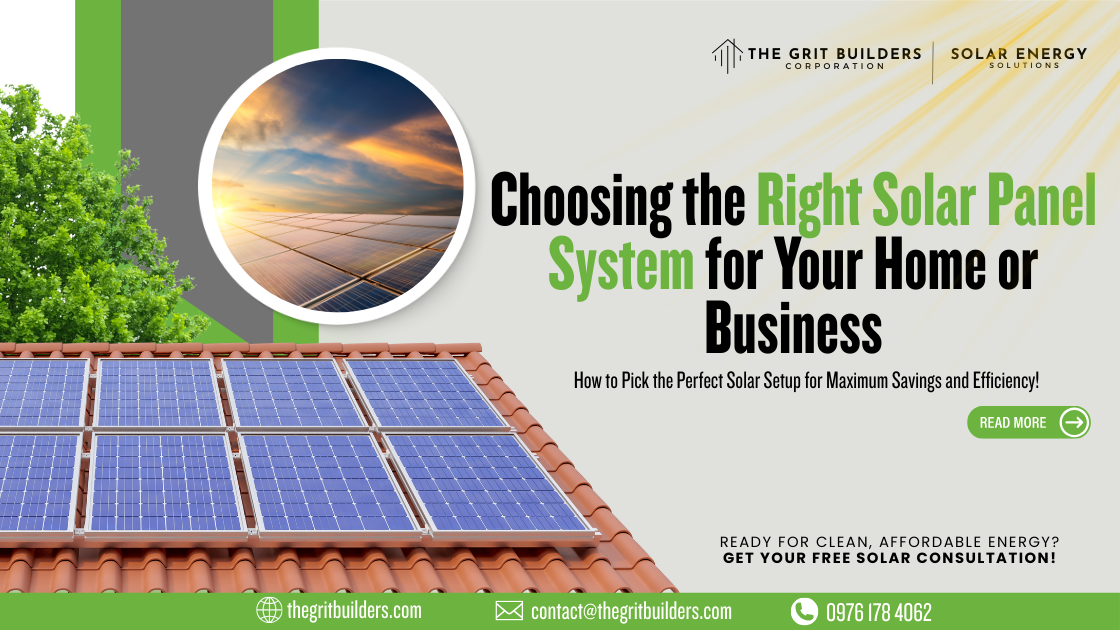As the world shifts toward clean and renewable energy, more homeowners and business owners are making the smart move to solar power. But with all the options on the market, how do you choose the right solar panel system for your specific needs? It’s not just about going green — it’s about going smart.
Here’s your complete guide to making the best solar investment for your property, your budget, and your long-term goals.

1. Understand Your Energy Needs
Before diving into panel types and installation options, start by reviewing your average energy consumption. Your electricity bills over the past 12 months will help you calculate how much power you use and when you use it the most. This will guide you in choosing a system that meets — or even exceeds — your energy needs.
Tip: Businesses with peak usage during the day might benefit more from solar than residential homes with evening peaks.
2. Consider Your Roof Space and Orientation
Not all roofs are created equal. The size, shape, shading, and angle of your roof play a big role in how much sunlight your panels can catch — and how much energy they can produce.
South-facing roofs (in the Northern Hemisphere) typically receive the most sunlight, but if your roof isn’t ideal, don’t worry — there are still ground-mount and tilt-frame solutions available.
3. Choose the Right Type of Solar Panels
There are three main types of solar panels:
Monocrystalline Panels: High efficiency, sleek look, great for limited space.
Polycrystalline Panels: More affordable, slightly less efficient, good for larger spaces.
Thin-Film Panels: Flexible and lightweight, best for commercial setups or specialty uses.
Each has its pros and cons, so the best option depends on your goals, location, and budget.
4. Evaluate Inverter Options
The inverter is the brain of your solar system — it converts the energy from your panels into usable electricity. You can choose between:
String Inverters: Cost-effective for unshaded roofs.
Microinverters: Offer better performance on complex or partially shaded roofs.
Power Optimizers: A hybrid solution for improved efficiency.
5. Think Long-Term: Warranty, Maintenance & ROI
A solar system is a long-term investment. Check for product warranties (typically 25 years for panels), service support, and maintenance plans. Calculate the return on investment (ROI) by comparing installation costs with energy savings over time.
Also, don’t forget to explore incentives, tax credits, and financing options that can significantly reduce your upfront costs.
6. Work with a Trusted Installer
Finally, choosing the right installer is just as important as choosing the right system. Look for certified professionals with strong customer reviews, clear warranties, and experience with both residential and commercial setups.
Go Solar, the Smart Way!
The perfect solar panel system isn’t one-size-fits-all — it’s custom-fit to your energy habits, space, and goals. With the right guidance, going solar can save you money, increase your property value, and help the planet at the same time.
Ready to switch on the sun? Let's find your perfect solar match today.

Leave a comment